These 4 iconic classics just aren’t attracting young buyers
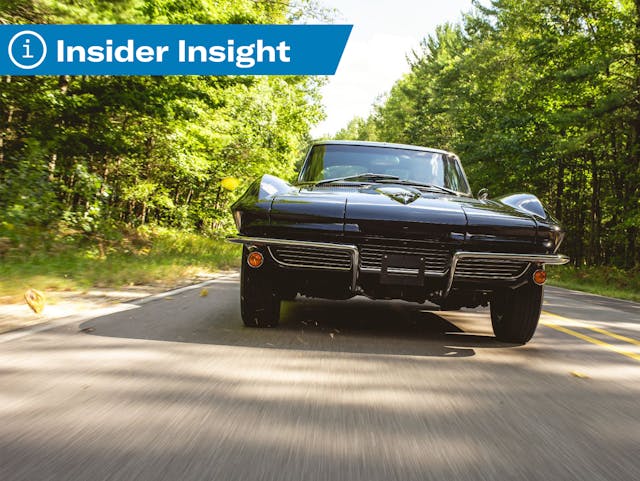
Want a better understanding of what’s driving collector-car values? Sign up for the Hagerty Insider newsletter.
If you’re a regular reader, you’ve probably noted that we frequently reference demographic data—in particular, age. That’s due to both supply and demand. We have a surfeit of information on enthusiasts’ ages courtesy of Hagerty’s insurance call centers (“how old are you” is one of the standard questions an agent will ask in order to give you a quote on insurance). And we know, from comments on Hagerty media articles and chatter at practically every car event, that many enthusiasts worry whether the next generations will keep our hobby going.
Generally, the story is an encouraging one. Our data show younger enthusiasts are increasingly interested in collector vehicles and in particular tend to appreciate the very same vehicles their parents and grandparents loved.
Of course, this interest is fortunate for the hobby—if every enthusiast sought out solely the new cars of their youth, tens of thousands of Ford Model Ts and Model As (along with countless other models) wouldn’t still be on the road.
This phenomenon doesn’t extend to every classic car, however. Based on our policy quote data, some vehicles face flagging interest among younger collectors—and we’re not just talking about fringe models, either.
Before diving in, we should remind you that age is just one of several factors that enable us to accurately track collector marque and model trajectories. Breaking down enthusiasts by generation admittedly lumps together a broad swath of automotive interests—a Gen-Xer born in California in 1965 may well have different collector influences and priorities than one born in Idaho in 1979, for example. That said, parsing interest in vehicles by collector age group has proven to be an effective indicator of the potential future health of that vehicle’s valuation.
1961–74 Jaguar E-Type (series I, II and III)
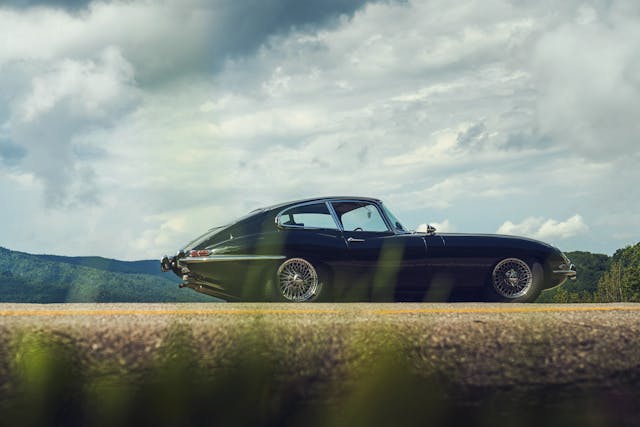
For all three series of E-Types, a full 80 percent of quotes are from enthusiasts born before 1965.
Cost likely has something to do with that—older enthusiasts still tend to dominate interest in more expensive vehicles, and the series I (1961–7) E-Type, the most popular model, is reliably a six-figure car, per both the Hagerty Price Guide and the values callers assign to their cars when they call us ($148K, on average). Yet the series II (1968–71) and the V-12-powered series III (1971–4) tend to be more attainable and still get relatively little interest from younger collectors.
1948–65 Porsche 356
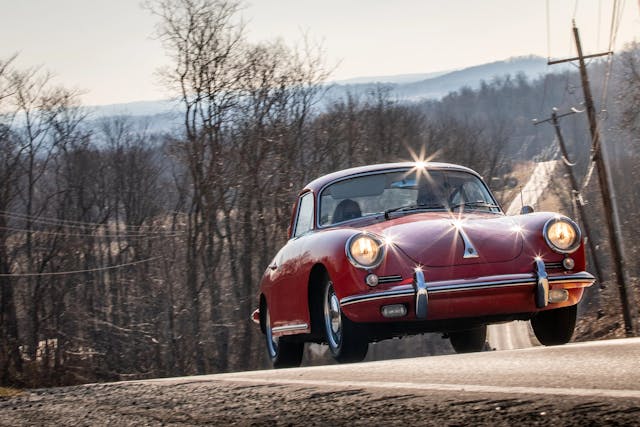
Porsche as a whole is one of the healthiest brands in terms of its appeal to enthusiasts of all ages, thanks largely to the longevity and timeless appeal of the 911. Yet that doesn’t seem to extend to the car that started it all, the 356.
Nearly 70 percent of the people calling us about insurance on one are born in 1965 or earlier. As with the E-Type, cost might be a factor. The earliest 356s (those built between 1949 and 1955, or “pre-A” in Porsche-speak) can hit seven figures, and even the later models (1963–5 356C) tend to be worth more than $100K. Yet no one would call the 964-era 911 Turbo an affordable car these days, and Gen-X and younger generations reliably make up close to fifty percent of interest in them.
1946–55 MG T-series
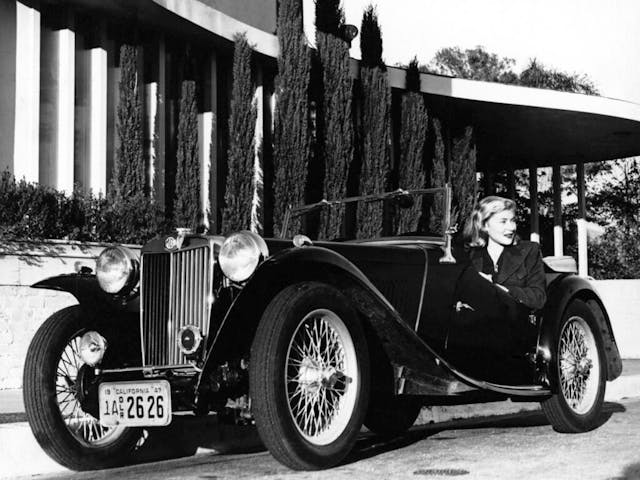
The MG aids in demonstrating that interest (or lack thereof) in a car is not simply a function of price. The MG series helped popularize the sports car in the United States after World War II and has always been an affordable gateway to the joys of open-air backroads driving. The 1950–3 TD, the most popular of the T-series MGs, can be had in good condition for around $20K. And yet 88 percent of quotes for these MGs are from enthusiasts born before 1965.
There are a number of factors here, including the fact that MG hasn’t sold a car in the United States since 1980. Yet the most salient reason for the MG’s lack of popularity among younger enthusiasts is probably the Mazda Miata, which is even less expensive (for now), considerably newer, and has the 1990s vibes that Millennials in particular seem to dig.
1963–7 Chevrolet Corvette

You might expect Corvettes to dominate this list but, for the most part, you’d be wrong. Late third-generation (or C3, 1974–1982) and fourth-gen cars (C4, 1984–1996) tend to be quite popular among younger collectors.
Yet for the 1963–7 C2, interest is indeed graying: Some 74 percent of people calling us about them were alive when the car came out. These cars aren’t MG-cheap, but, leaving aside early split-window cars and ultra-rare variants, neither are they E-Type expensive. People calling us for a quote on a C2 state an average value of $83K, about sixty grand less than for early E-Types.
The outlook isn’t the same for all American cars of this era. The 1961–9 Lincoln Continental (29 percent of quotes come from those born prior to 1965), 1960s Chevrolet Impalas (36 percent), the 1965–8 Ford Mustang (41 percent), and 1949–67 Volkswagen Beetle (36 percent) all have a majority of quotes from Gen-X and younger enthusiasts.
What’s to come?
What are the potential implications for those vehicles that don’t have much youth appeal? In the short term, we don’t see much risk. People from the baby boomer or earlier generations still control nearly 65 percent of the wealth in the United States and are extremely active in the collector car market.
If these trends continue over the long term, however, affected vehicles may see diminishing demand and values that don’t keep up with inflation or decline.
That won’t shake any of those cars from the firmaments of classic-car legend, and it won’t make them any less fun on your favorite road. Just the same, it never hurts to head out to local events, let the kiddos sit in the car, and take them for a spin.
***
Check out the Hagerty Media homepage so you don’t miss a single story, or better yet, bookmark it. To get our best stories delivered right to your inbox, subscribe to our newsletters.
Via Hagerty Insider
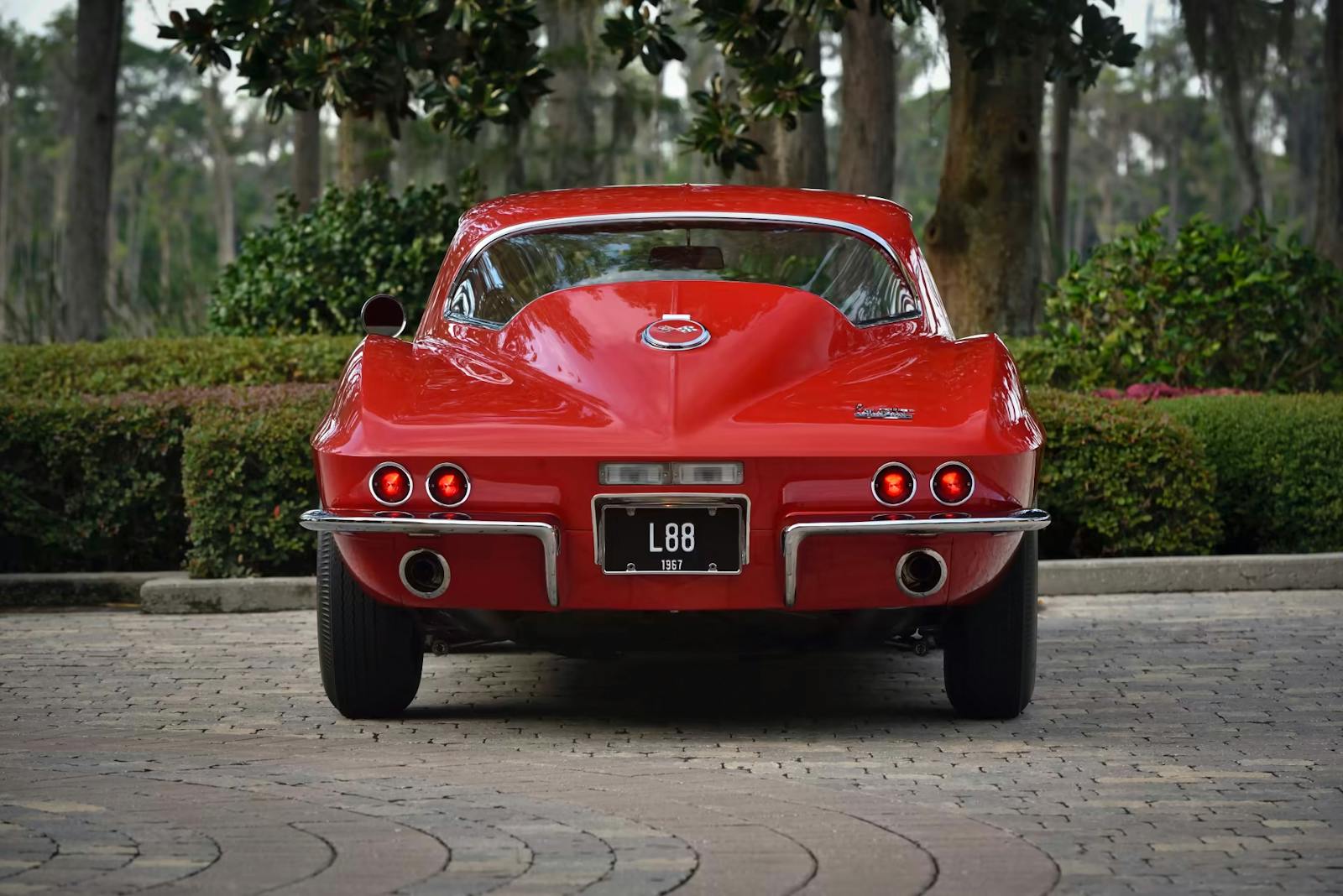

One factor with the MG is that it was built for smaller people. Even then, that dip in the top of the door was there to let people ride with one arm outside the car. I can’t see my 6′ 1″ 210 lb. stepson being remotely comfortable in one.
Isn’t it true that tweed jackets needed leather patches on the elbows because of the beating they got hitting the gravel while driving an MG?😉
Purchase price and ongoing maintenance costs. Costs to keep them on the road running and driving… fear of driving an E-type or early Vette- some dork hits you while on his/ her phone with no insurance…
Look at the Porsche 928. I’d love to have one, but I know if I bought a $10,000 928 I’d quickly have another $10,000 in it. And a $20,000 928 will have a healthy ongoing appetite for service work. I sure would love to have one though!!
Money would be a big driver for many people. If you don’t have the money then the interest isn’t going to show is it? I like lots of cars but I won’t be buying an E-Type or various Corvettes because they are priced either out of reach or beyond my willingness to spend. The younger you are the lower that threshold tends to be also.
Finally, someone isn’t afraid to tell the emperor he has no clothes.
For years automotive writers have been writing the obituaries for brass era, 20s, enclosed cars of the ’30s, and ’50s cars (how often have you heard the 55-57 T-Bird and Chevy market is dead because the guys that wanted them are “graying” out…a polite euphemism for dying)?
Why wouldn’t that trend continue with cars from the 60s?
The E-Type is a silly rolling phallic symbol, the C2 has some styling excesses (come on, I’ve cube trays on the hood?) and the driving dynamics little improved from the C1.
The 356 is great if you are a trust fund kid from Connecticut whose dad used to hang with Paul Newman. But as a car, not an “icin” or an investment, they really are glorified Volkswagersns for anyone other than some wealthy boomer.
Finally the MG T series was in some long before the last one rolled off the dealer’s lot. Why would a young person who grew up with a reasonable amount of performance, safety and reliability really want one? You can’t drive them on the interstate, (a requirement for most cities if for no other reason than to get out of town) and their reliability is always suspect.
Boomers are a narcissistic bunch.
Just because THEY loved them, they expect everyone else to. Their wealth and nostalgia has pushed the prices of their favorite toys to where the next generation can’t afford them, even if they were willing to live with their shortcomings.
And that’s not even addressing the elephant in the room…Will the next generation have the money to drive a ICE vehicle to go taxes, and environmental regulations?
Will having a fossil fuel car be as socially acceptable as smoking or admitting you like Woody Allen films?
I agree with many of the comments on the older Corvettes and Jaguars. As an elder, I owned several Corvettes (C2,C3, and C5 Z06) I also had a V12 XKE. All new. So from my perspective, been there done that. I am now driving Nissan GT-R. I feel safer than with the older cars. Any it is very fast. Far faster than my 2003 Z06. Safely is a major issue at my age.
I’m GenX and I feel I’m pretty well equipped to comment on three of these cars. Two of which, the 356 and E-Type, I lusted after and actually shopped for in the mid 1990s. There were 356s and E-Types under $20k back then. Alas, my income (and garage space) did not allow for a classic car. Since then my income and garage space have grown, but not nearly as fast as the prices of 356s and E-Types. As for the MG T type? I have a 1950 MG TD in my garage today. I think the biggest problem with this article is drawing conclusions from too small a sample size.
Agreed. I’m GenX and I own an Series 2 E-type and a TC. Complaining about not being able to drive a T-series on the interstate misses the point. How many cars, let alone modern ones, are a blast to drive at 40mph? Most speed limits in my immediate area are under 50mph, perfect for an old roadster.
I’ve also owned more modem and much faster cars, but to me they just don’t feel as special as the classics.
Does quote-call data include if the caller owns the car or if they are researching a purchase?
If they own the car, it would be interesting to ask how the car was acquired. We are at the point where “inherited” may be a surprisingly frequent response, especially for cars regarded as ‘classic’ (‘57 Bel Air, GTO, et. al.). An over-80 owner may have no intent to sell the car but they wish to keep the car in the family. A quote inquiry does not necessarily mean a transaction will, or has taken place.
The rapacious hollowing out of the middle class, strapping them with school debt, evermore unaffordable housing options, and the forced move to electrics will have far more negative consequences on the collector car hobby than will lack of interest by the up-and-coming generations. These are mega-trends that have been building a tidal wave of momentum for years, and aren’t likely to reverse themselves.
Agree
A couple of years ago, my son born in ’83, gratefully accepted my 1952 MG TD which I’ve had since 1979. He is building the same memories with his kids that I built with him in the car. The only difference is that he does not have the time to maintain it, so once in a while I come up from Texas to tune and care for it.
Of the 4 the Corvette has best parts availability and with a reasonable SBC will run for a long time.
I agree with you the Corvette is going to survive the longest and the style is timeless.
Great comments, I am in the 20%, I am 45 years old and have a series 1 E-type coupe, with 2 younger kids its very hard to find the time to use it. I have averaged 500 miles a year over the last 2 years , which isn’t great. My lovely wife reminds me that in a few years we will have lots of time to drive and enjoy it and if I sell it I will never be able to afford / be willing to buy one again.
The 356 and air cooled 911’s have been a goal for as long as I can remember, but the current costs out weight my interest in owning one.
No easy answers. Most of it is PRICE. I had a ’69 Chevelle in high school. Bought for $1100 in 1979. Plain Malibu with a 307 PG. Kept it 14 years and sold for $650. Wished I kept it but it needed SO much body work and the reproduction panels weren’t there then. Now you can’t touch one for less than $30k, IF you can find one that is NOT SS badged. Rotted out Bondo hulks go for $10k. Also, there are more SS’s out there than GM ever built. The less popular ‘more doors’ and wagons are almost all gone. Those MIGHT have been affordable alternatives that we poo-pooed as kids.
Younger people may not have a place to keep a collector car, let alone $60~160K to purchase a prime example to just park in a garage, or pay $600/mo to store. Young people love MG T series, E types, Vette of all years, including the C1 and C2. Porsche 356s are silly expensive, as ae 911s of any age. Once these young people get a little older, they will buy homes with 3 car garages, and pick up that collector car. What will they collect? The cars listed (cause Grand Dad may have had one, or one was simply inherited). They will also want Miatas, Mustangs, Camaros… The modern ones. Manual transmissions will be rare, and half the drivers who own them won’t be able to drive them, but… Well, “Let me show you my collector car in the garage”…. The more things change, the more they stay the same. I remember when I was told that the grand classics would be worthless… No young guy like me (now over 70) would want one.
All these comments make some good points. I attend many automotive events, and have a passion for the hobby. There are many Gen Z and Gen X out there driving high end exotic cars (not cheap). However, when I attend an event with my ‘64 Vette or ‘72 Camaro, there are many of these younger guys that express interest and appreciation for the cars.
Talking with the Gen Z-ers, in particular, my experience has been they appreciate many of these era vehicles but, like those which are built as Rest-Mods. They will say things like, I like the classic Camaros, Chevelles etc. but want to be able to get in it, and take a road trip while not worrying about reliability issues, as well as having a drivetrain, and comfort features making the car more compatible to today’s highway environment, at the same time, persevering the uniqueness and classic heritage.
It would be interesting to see the demographic stats on the 50s-70s Resto-Mods/Pro-Touring vs the same era of the original vehicles.
All four of those cars were new during my youth (mid 50s-mid 60s) and I especially lusted after a TD and a 356 Porsche. E Jags and Vettes were out of my college age $1.25/hr jobs) price range. In the early 60s I was offered a TD (jumped out of 2nd gear) for $300, and a ’51 Porsche (great shape except a 40 hp VW engine) for the same amount. Couldn’t afford either, so my first car was a Renault 4CV. Now it’s rarer than either the Porsche or the TD, because no one saved ’em…